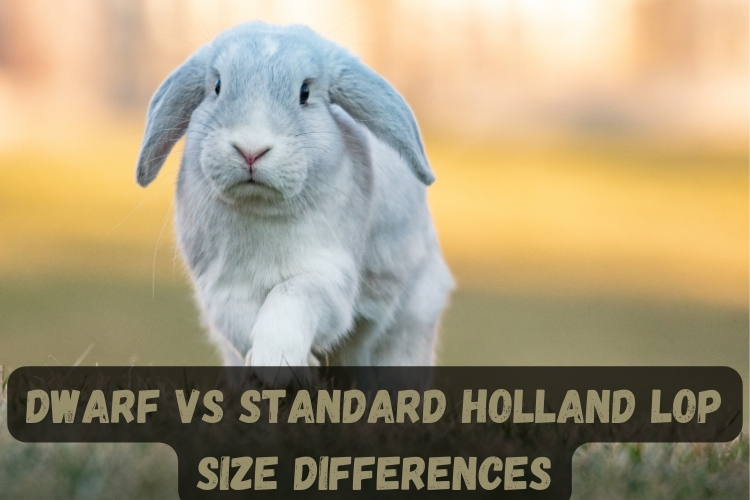When it comes to choosing the perfect furry companion, understanding the differences between Dwarf and Standard Holland Lop rabbits can be crucial. These adorable creatures vary not only in size but also in lifespan, temperament, and care requirements.
In this blog post guide, we’ll be discussing about the nuances between these two breeds to help you make an informed decision on which rabbit might be the right fit for your home and lifestyle.
Key Takeaways
- Mini Lop rabbits are slightly larger than Holland Lops, with Mini Lops weighing between 3-6.5 lbs and Holland Lops around 4 lbs.
- While Mini Lops generally have a longer lifespan of 5-10 years compared to Holland Lops’ 5-7 years, Holland Lops are slightly taller in height.
- Both breeds are known for their calm and gentle nature, but Mini Lops are considered more docile and relaxed.
- Proper habitat is crucial for the health of these rabbits, with a recommended cage size being at least three to four times the size of the rabbit.
- Mini Lop rabbits are a popular choice for families due to their adorable appearance and friendly temperament, but they require careful handling due to their smaller size.
Understanding the Size and Lifespan Differences
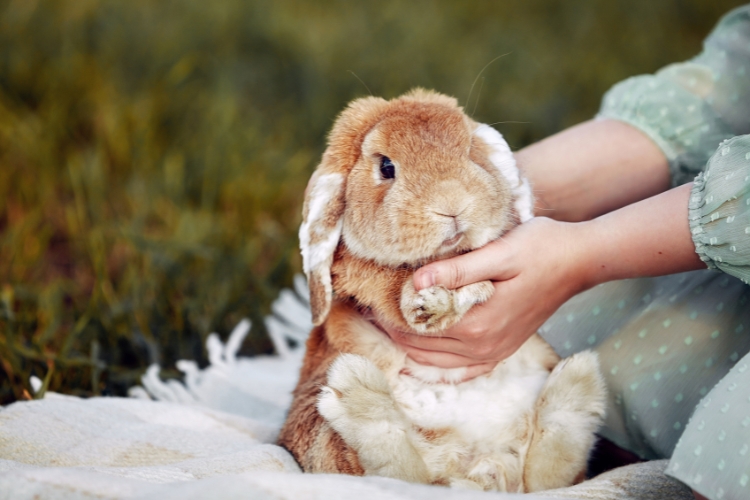
Comparing the Average Weights
When considering the adoption of a Holland Lop or a Mini Lop, understanding the average weight of each breed is crucial for prospective owners.
The Holland Lop, known for its compact size, typically weighs between 2 to 4 pounds. In contrast, the Mini Lop is slightly larger, with an average weight ranging from 4.5 to 6 pounds.
| Breed | Average Weight |
|---|---|
| Holland Lop | 2 – 4 pounds |
| Mini Lop | 4.5 – 6 pounds |
It’s important to note that these weights can vary depending on factors such as diet, environment, and genetics.
A well-balanced diet and regular exercise are essential in maintaining a healthy weight for these rabbits. Overweight rabbits may face health issues, just as underweight ones might.
While the weight difference may seem minor, it can significantly impact the rabbit’s overall health and the care required. Always consult with a veterinarian to ensure your rabbit maintains an optimal weight.
Height Variations Between Breeds
When considering the size of a rabbit, height is as important as weight. Dwarf breeds, such as the Holland Lop, are not only lighter but also shorter in stature compared to standard breeds.
The Holland Lop, for instance, is known for its compact size and characteristic droopy ears, which contribute to its overall shorter appearance.
| Breed | Average Height |
|---|---|
| Holland Lop | 10-12 inches |
| Standard Lop | 12-15 inches |
While the Holland Lop is a favorite for those seeking a smaller pet, the Standard Lop offers a more substantial presence due to its larger frame. It’s essential to consider the space you have available when choosing between these breeds, as their height will influence the size of the habitat they require.
The height of a rabbit can significantly affect its housing needs and how comfortably it can move around in its environment.
Lifespan Expectancy of Holland Lop vs Mini Lop
When considering the lifespan of these popular rabbit breeds, the Mini Lop generally boasts a longer life expectancy than the Holland Lop.
Mini Lops can live between 5 to 10 years, often averaging around 7 to 8 years, and in some cases, reaching up to 12 years. In contrast, Holland Lops have a shorter lifespan, typically ranging from 5 to 7 years.
Factors influencing their longevity include health, diet, and living conditions. Both breeds are susceptible to common rabbit health issues such as digestive problems, respiratory diseases, and uterine cancer. Proper care and attention to their needs can help ensure a longer, healthier life.
It’s essential to provide a balanced diet, regular veterinary check-ups, and a safe, comfortable habitat to support the well-being of your rabbit, regardless of the breed.
Here’s a quick comparison of their lifespans:
| Breed | Average Lifespan |
|---|---|
| Mini Lop | 5-10 years |
| Holland Lop | 5-7 years |
Choosing a rabbit companion is a commitment, and understanding the potential lifespan is crucial for prospective owners. While the Mini Lop may have a slight edge in longevity, both breeds require dedicated care to thrive.
Physical Characteristics and Temperament
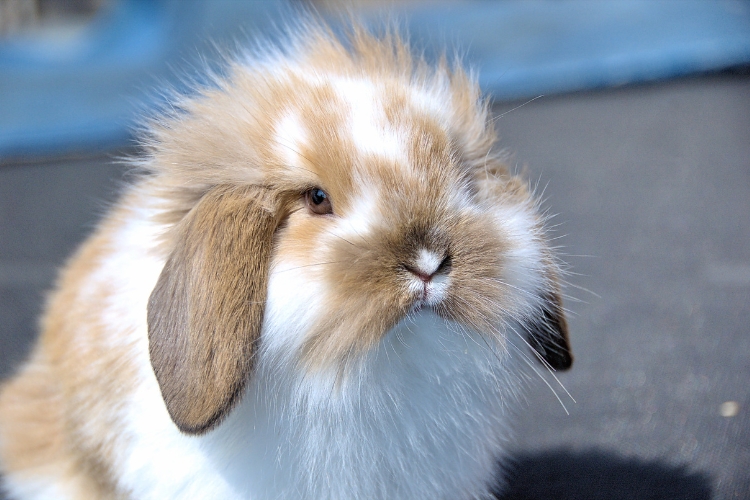
Identifying a Mini Lop Rabbit
Mini Lop rabbits are a charming and popular breed, known for their compact, muscular build and distinctive lopped ears. Identifying a Mini Lop is straightforward due to their unique physical characteristics.
They possess a very short neck, a broad head, and their ears hang down on either side of their face, which is a hallmark of the breed.
The fur of a Mini Lop is dense, medium-length, and has a rollback quality, meaning it swiftly returns to its original position when stroked in the opposite direction. Their fur, which is both soft and glossy, typically measures 3-4 cm in length. Mini Lops come in a variety of colors including Black, Lynx, White, Opal, and Chinchilla.
Mini Lops are not only recognized for their adorable appearance but also for their docile and gentle nature, making them excellent pets.
When considering a Mini Lop as a pet, it’s important to note their adult weight ranges from 3 to 6.5 lbs, and they have a lifespan of 5 to 10 years. Here’s a quick glance at their basic profile:
| Common Name | Adult Weight | Lifespan | Colors | Good Pets? |
|---|---|---|---|---|
| Mini Lop Rabbits | 3 – 6.5 lbs | 5-10 Years | Varied | Yes |
Mini Lops are active and playful, requiring sufficient space for exercise. They are capable of jumping up to 3 feet and can reach speeds of 30 mph, which should be considered when planning their living space.
Behavioral Traits of Holland Lop and Mini Lop
When considering the behavioral traits of Holland Lop and Mini Lop rabbits, it’s important to note that both breeds are known for their gentleness and intelligence.
Holland Lops are playful and enjoy interacting with their owners, often forming strong bonds. Mini Lops, on the other hand, are recognized for being more docile and mellow, making them slightly more relaxed companions.
Both Holland Lop and Mini Lop rabbits share a common trait of calmness, which makes them suitable for families and individuals seeking a serene pet.
While Holland Lops are generally sociable and curious, Mini Lops are known for their docile nature. However, it’s essential to remember that individual personalities can vary, and the environment plays a significant role in shaping a rabbit’s behavior. Here’s a quick comparison of their temperaments:
- Holland Lops: Playful, sociable, curious
- Mini Lops: Docile, mellow, relaxed
It’s also worth mentioning that neither breed is typically aggressive, but like any animal, they can exhibit defensive behavior when afraid or provoked. Proper handling and socialization from a young age can help mitigate any potential issues and ensure a harmonious relationship with these adorable creatures.
Handling and Care for Smaller Rabbit Breeds

Smaller rabbit breeds, such as the Holland Lop, require gentle handling due to their delicate nature. Children should be supervised when interacting with these rabbits to ensure they are treated with the necessary care and respect.
Smaller breeds do not necessarily need a lot of space or intensive care, making them suitable for apartment living.
When introducing a small rabbit to your home, it’s important to consider the presence of other pets. For instance, hamsters or guinea pigs should be kept separate to avoid territorial disputes. Similarly, keeping rabbits away from birds or reptiles is advisable to prevent any potential stress or harm.
Cottontail rabbits, while not the same as Holland or Mini Lops, exemplify the skittish nature that can be found in smaller breeds. They may become stressed with new environments or people, which underscores the importance of a calm and stable setting for these animals. A proper diet and care regimen are crucial for maintaining their health.
Remember, the breed of a rabbit can indicate its appearance but not its behavior. Each rabbit has a unique personality, and their care needs may vary accordingly.
Habitat Requirements for Optimal Health
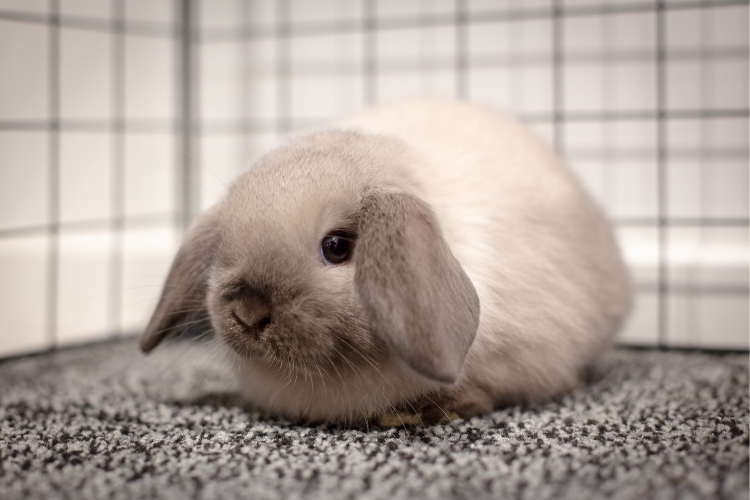
Cage Size Considerations
When selecting a cage for your Mini Lop, size matters significantly. A spacious cage not only ensures comfort but also promotes the well-being of your rabbit. For a Mini Lop, the recommended minimum cage size is at least 24″ imes 36″.
Ideally, the cage should be three to four times the size of the rabbit, with the optimal dimensions being around 30″ imes 36″. Multi-story hutches are an excellent choice as they offer additional space for your bunny to explore.
Mini Lops are known for their active and playful nature, requiring ample room to move, play, and exercise. A cramped space can lead to stress and health issues. Therefore, it’s crucial to provide a habitat that accommodates their needs. Here’s a quick reference table for cage sizes:
| Rabbit Size | Minimum Cage Size | Optimal Cage Size |
|---|---|---|
| Small | 24″ imes 36″ | 30″ imes 36″ |
| Medium | 30″ imes 36″ | Multi-story Hutch |
Remember, the bigger the cage, the better. Your rabbit’s health and happiness depend on a suitable living environment that allows for sufficient movement and enrichment.
While the initial cost of a larger cage might be higher, it’s a worthwhile investment for your rabbit’s long-term health. Ensure that the habitat you choose is safe, with no sharp edges or hazards, and is easy to clean and maintain.
The Importance of Space for Activity
Rabbits are active and social animals that require ample space to hop, play, and explore. Adequate space is not just a luxury, but a necessity for their physical and mental well-being. It’s crucial to provide an environment that allows for a range of activities, from foraging to hiding, which mimics their natural habitat.
- Space for exercise helps prevent obesity and maintain muscle tone
- Room to play and interact with toys or other rabbits can reduce stress
- Areas to retreat and hide are essential for a sense of security
When considering the habitat for a Holland Lop or Mini Lop, remember that a spacious area can significantly enhance their quality of life. It’s not just about the size of the cage, but also the opportunities for movement and enrichment within their living space.
While rabbit cages and hutches are often the first thought for new owners, they should not be the sole environment for your pet. Instead, think of them as a base or ‘home’ that your rabbit can return to for rest and safety.
The rest of their habitat should include a larger, secure area where they can freely move about and exhibit natural behaviors.
Creating a Comfortable Environment
Creating a comfortable environment for your Holland Lop or Mini Lop is crucial for their well-being. Adequate space is not just a luxury, it’s a necessity for these active creatures. To ensure your rabbit’s habitat is a haven, consider the following points:
- The cage should be large enough for the rabbit to move around freely. It should be at least four times the size of your rabbit when stretched out.
- Include areas for feeding, sleeping, and litter within the cage to mimic a natural habitat.
- Regularly clean and maintain the cage to prevent the buildup of harmful bacteria.
Remember, a rabbit’s environment can greatly influence their health and happiness. A well-designed cage can help reduce stress and promote a sense of security.
When selecting a cage, refer to guides like The Ultimate Guide to Indoor Rabbit Cages – Kavee, which offer valuable insights into choosing the right cage, maintenance, and accessorization to enhance your rabbit’s quality of life.
Making an Informed Decision: Purchasing a Mini Lop
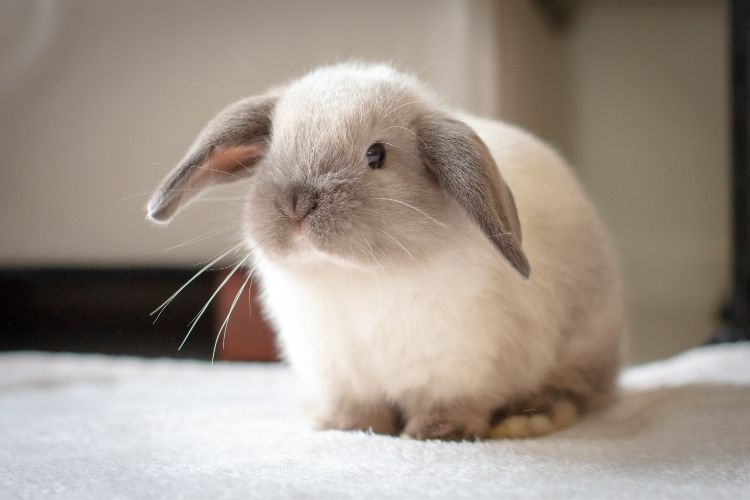
7 Essential Facts Before You Buy
Before welcoming a Mini Lop into your home, it’s crucial to consider these seven essential facts. Mini Lops are known for their playful and affectionate nature, but they also require specific care and attention.
- Space Requirements: Mini Lops are active and need ample space to exercise. Ensure you have enough room for them to hop, run, and explore.
- Lifespan: With proper care, Mini Lops can live 7-14 years, so be prepared for a long-term commitment.
- Diet: A balanced diet of hay, vegetables, and pellets is vital for their health.
- Health Care: Regular veterinary check-ups and vaccinations are necessary to keep them healthy.
- Social Needs: Mini Lops are social animals and may require a companion to thrive.
- Grooming: They need regular grooming to maintain their coat and prevent matting.
- Cost: Consider the initial cost of the rabbit, as well as ongoing expenses for food, housing, and healthcare.
When deciding to purchase a Mini Lop, remember that they are not just a pet but a new member of your family that will need your time, love, and care.
Understanding the Costs
When considering the purchase of a Mini Lop rabbit, it’s crucial to understand the financial commitment involved. Initial costs can include the price of the rabbit, which varies depending on the breeder, lineage, and show quality.
Additional expenses such as spaying or neutering, vaccinations, and initial veterinary check-ups should also be factored in.
Beyond the initial outlay, ongoing costs are an essential part of the budgeting process. These include food, bedding, and healthcare expenses. To give you a clearer picture, here’s a breakdown of potential monthly costs:
| Expense Category | Estimated Monthly Cost |
|---|---|
| Food & Treats | $20 – $40 |
| Bedding | $10 – $30 |
| Healthcare | $10 – $20 |
| Toys & Accessories | $5 – $15 |
Remember, these are estimated costs and can vary based on your location, the availability of supplies, and your rabbit’s specific needs.
It’s also wise to set aside a contingency fund for unexpected medical emergencies or care-related expenses that may arise. Owning a Mini Lop is a long-term commitment, and being financially prepared is key to providing a happy and healthy life for your furry friend.
Choosing the Right Rabbit for Your Home
When selecting a rabbit for your home, it’s crucial to consider more than just the breed’s appearance. Each rabbit has a unique personality, and factors like size and grooming needs can impact your choice.
Large rabbits require spacious living areas, and those with long hair may need additional grooming. Here’s a quick guide to help you make an informed decision:
- Assess your living space for adequate accommodation.
- Consider the grooming requirements of the breed.
- Think about the rabbit’s potential size and whether it aligns with your space.
- Reflect on the time you can dedicate to care and interaction.
Remember, the right rabbit should fit comfortably into your family’s lifestyle and be manageable in terms of care and space.
In conclusion, while some rabbits are known for their docile nature and others for their distinctive looks, the best choice for your family is one that will thrive in your home environment and bring joy to all members. Research is key to finding a pet that matches your lifestyle, ensuring a happy bond between you and your new furry friend.
Frequently Asked Questions
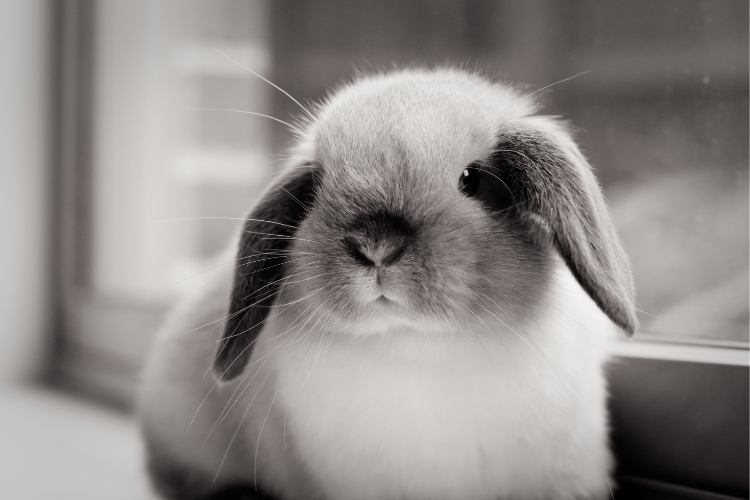
Are Mini Lop Rabbits Aggressive?
Mini Lop rabbits are generally known for their docile and gentle nature, making them excellent pets for families and individuals alike. However, like any animal, they can exhibit aggressive behavior under certain circumstances. When Mini Lops feel threatened or are in pain, they may resort to biting as a defensive mechanism. During the mating season, female Mini Lops can become more territorial and may show signs of aggression.
It’s important to understand that aggression in Mini Lops is often a response to their environment or handling. Ensuring that your Mini Lop has a comfortable habitat and is handled with care can greatly reduce the chances of aggressive behavior. Mini Lops require attention and interactive playtime; neglecting these needs can lead to frustration and potentially aggressive actions.
Mini Lops are not inherently aggressive, but their behavior can be influenced by their surroundings and treatment.
If you’re considering a Mini Lop as a pet, it’s essential to be aware of their behavioral needs and to provide a nurturing environment. With proper care and socialization, Mini Lops can be affectionate companions.
Differences Between Holland Lop and Mini Lop Rabbits
When considering the Holland Lop and Mini Lop rabbits, size is a distinguishing factor. Mini Lops are generally a bit larger, weighing in at 3-6.5 pounds, compared to the Holland Lops, which typically weigh around 4 pounds. Despite this, Holland Lops tend to stand slightly taller.
Lifespan is another area where these breeds differ. Mini Lops have a longer lifespan, ranging from 5 to 10 years, while Holland Lops usually live between 5 to 7 years. Both breeds are known for their calm and gentle nature, but Mini Lops are often described as more docile and relaxed.
In terms of temperament, Mini Lops are recognized for their mellow disposition, making them a popular choice for those seeking a laid-back companion.
Here’s a quick comparison:
| Trait | Holland Lop | Mini Lop |
|---|---|---|
| Weight | ~4 lbs | 3-6.5 lbs |
| Height | Slightly taller | Shorter |
| Lifespan | 5-7 years | 5-10 years |
| Temperament | Calm, Gentle | More docile, Relaxed |
Caring for Your Mini Lop: Common Concerns
Caring for a Mini Lop rabbit involves understanding their specific needs and common health concerns. Proper diet is crucial for maintaining a Mini Lop’s health. A diet consisting predominantly of hay is essential, as it aids in digestion and dental health. Here’s a simple breakdown of a Mini Lop’s dietary needs:
- Hay: 70-75%
- Vegetables: Spinach, parsley, beans, broccoli
- Commercial rabbit food: As a supplement
- Fresh water: Always available
Chewing is a natural behavior for Mini Lops, so it’s important to rabbit-proof any area they have access to. This includes removing or securing loose wires and ensuring that harmful substances are out of reach.
Mini Lops should never consume meats or dairy products, as these can disrupt their delicate digestive systems. Additionally, bathing a rabbit can be stressful, so it’s only recommended when absolutely necessary. Regular nail trimming is also important to prevent overgrowth and discomfort.
Remember, each Mini Lop is unique, and their care will vary based on factors like age, gender, and activity level. Always consult with a veterinarian for personalized advice.
Conclusion
In conclusion, when deciding between a Dwarf and a Standard Holland Lop, it’s essential to consider the size, temperament, and care requirements of each breed. Dwarf Holland Lops are smaller, with an average weight of up to 2.9 pounds, making them suitable for those with limited space.
Standard Holland Lops, weighing around 4 pounds, offer a slightly larger option. Both breeds are known for their friendly and adaptable nature, but Mini Lops tend to be more docile and relaxed. Remember that while Mini Lops have a longer lifespan of 5-10 years compared to Holland Lops’ 5-7 years, both require a commitment to proper care, including spacious cages and attention to their social needs.
Ultimately, the choice depends on your personal preferences, living arrangements, and the level of care you’re willing to provide for these charming and affectionate companions.
FAQs:
What are the main size differences between Holland Lop and Mini Lop rabbits?
Mini Lop rabbits are generally a bit larger than Holland Lops, with Mini Lops weighing around 3-6.5 lbs and Holland Lops around 4 lbs. However, Holland Lops tend to be a little taller in height compared to Mini Lops.
Which rabbit breed has a longer lifespan, Holland Lop or Mini Lop?
Mini Lops have a longer lifespan ranging from 5-10 years, while Holland Lops have a lifespan of about 5-7 years.
Are Mini Lop rabbits more docile compared to Holland Lops?
Yes, Mini Lop rabbits are known to be more docile, mellow, and relaxed than Holland Lops, although both breeds are recognized for their calmness, intelligence, and gentleness.
What is the ideal cage size for a Mini Lop rabbit?
The ideal cage size for a Mini Lop rabbit is at least 24″ x 36″, but a larger cage is preferable. Multi-story hutches are recommended as they provide more space for the rabbits to move, play, or exercise.
Can Mini Lop rabbits show aggressive behavior?
Mini Lop rabbits are generally not aggressive, but they can exhibit aggressive behavior when afraid, provoked, during mating season, or if injured, especially females.
What should I consider before purchasing a Mini Lop rabbit?
Before purchasing a Mini Lop rabbit, consider factors such as their size, lifespan, temperament, habitat requirements, cage size, and potential costs. Ensure you have enough space for them to play and exercise, and be prepared for a commitment of 5-10 years.

